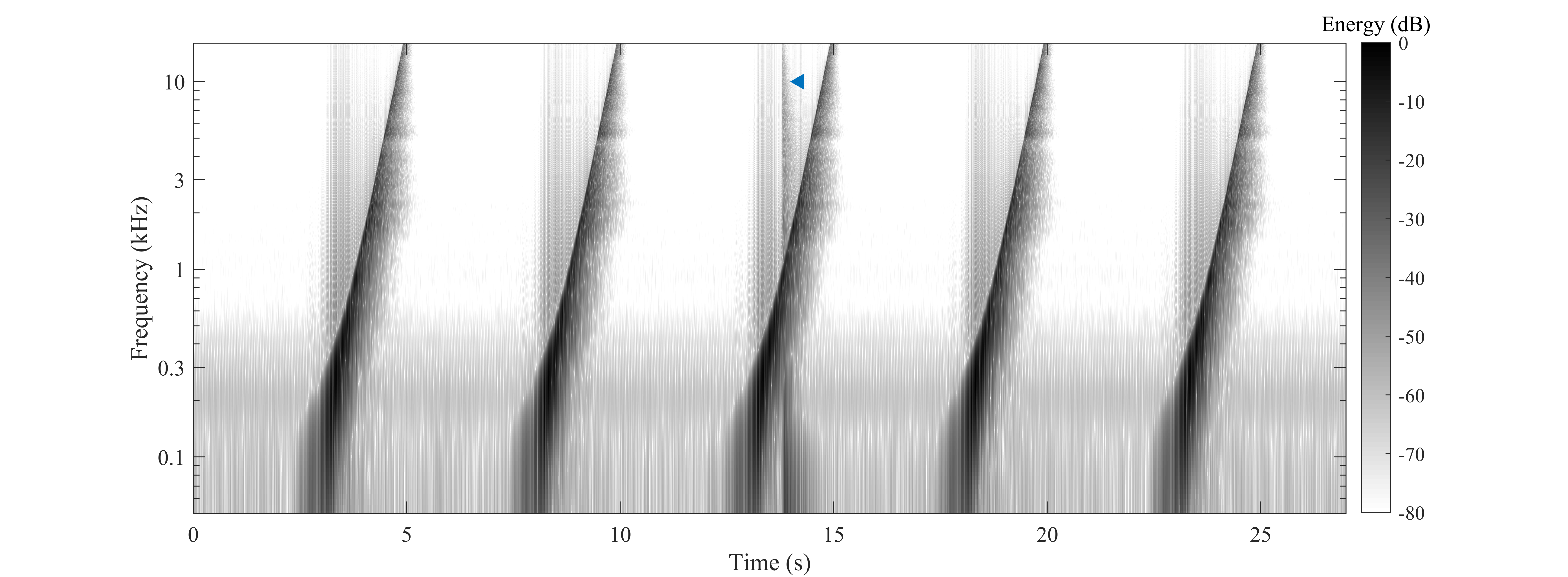
Robust detection of clean swept-sine measurements in non-stationary noise
Karolina Prawda, Sebastian J. Schlecht and Vesa Välimäki
Companion page for a paper published in the Journal of the Acoustical Society of America
Cite as: Karolina Prawda, Sebastian J. Schlecht, and Vesa Välimäki, "Robust selection of clean swept-sine measurements in non-stationary noise", The Journal of the Acoustical Society of America 151, 2117-2126 (2022), doi: https://doi.org/10.1121/10.0009915
Abstract
The exponential sine sweep is a commonly used excitation signal in acoustic measurements. It is, however, susceptible to non-stationary noise. This paper shows how to detect contaminated sweep signals and select clean ones based on a procedure called the rule of two, which analyzes repeated sweep measurements. A high correlation between a pair of signals indicates that they are devoid of non-stationary noise. The detection threshold for the correlation is determined based on the energy of background noise and time variance. A median-based method is suggested for reliable background noise energy estimation, as it is not disturbed by non-stationary events. The proposed method is shown to detect reliably 95% of impulsive noises and 75% of dropouts in the synthesized sweeps. The proposed method is tested on a large set of measurements and is compared with a previous method showing that it is more robust in detecting various non-stationary disturbances, improving the detection rate by 30 percentage points. The rule-of-two procedure increases the robustness of practical acoustic and audio measurements.
Examples of Exponential Sine Sweeps with non-stationary noise

Expected PCC values based on SNR are indicated with the dashed blue line.
Dot-dashed blue line shows the lowed bound for PCC values, when the background noise is assumed to be anticorrelated.
Detection threshold including the transfer function variation is marked with the solid blue line.
Arrows of respective color show the PCC values for the signals presented below.

Audio player: Werner, Nils, et al. "trackswitch.js: A Versatile Web-Based Audio Player for Presenting Scientifc Results." 3rd web audio conference, London, UK. 2017.